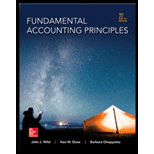
Concept explainers
Introduction:
General Purpose Financial Statements:
• Financial statements are financial records of the entities transactions for a given reporting period and indicate the financial health of an entity. They comprise of:
- Income Statements and Notes to Income Statement,
- Statement of
Retained Earnings
- Statement of Shareholders’ Equity.
- Balance Sheets and,
Cash flow statements.
• Income Statements and Notes to Income Statement record the results of the company’s operations during a particular reporting period and provide information about the sources of funds and expenses of an entity.
• The sources of incomes are revenues from sales of goods and services and expenses are in the form of direct and indirect cost of operations. Surplus or deficit of the incomes over expenses is carried forward to the
• Balance Sheet is a list of the closing balance of assets, liabilities and equity of an entity as on a particular date and it is used for analysis of the financial health of the entity.
• Assets have a debit balance and are responsible for direct or indirect revenue generation or cost reduction. Liabilities are obligations of the business incurred during the reporting period. Equity comprises of the retained earnings and equity capital invested in the entity.
• The sources of incomes are revenues from sales of goods and services and expenses are in the form of direct and indirect cost of operations. Surplus or deficit of the incomes over expenses is carried forward to the Balance sheet and form part of the retained earnings.
• Journal entries are the first step in recording financial transactions and preparation of financial statements.
• These represent the impact of the financial transaction and demonstrate the effect on the accounts impacted in the form of debits and credits.
• Assets and expenses have debit balances and Liabilities and Incomes have credit balances and according to the business transaction, the accounts are appropriately debited will be credited by credited to reflect the effect of business transactions and events.
To Prepare:
a) Closing Entries
b) Income Statement
c) Balance Sheet
d) Post-Closing
Want to see the full answer?
Check out a sample textbook solution
Chapter 4 Solutions
Fundamental Accounting Principles -Hardcover
- I need guidance with this financial accounting problem using the right financial principles.arrow_forwardI need assistance with this general accounting question using appropriate principles.arrow_forwardI need assistance with this financial accounting question using appropriate principles.arrow_forward

 AccountingAccountingISBN:9781337272094Author:WARREN, Carl S., Reeve, James M., Duchac, Jonathan E.Publisher:Cengage Learning,
AccountingAccountingISBN:9781337272094Author:WARREN, Carl S., Reeve, James M., Duchac, Jonathan E.Publisher:Cengage Learning, Accounting Information SystemsAccountingISBN:9781337619202Author:Hall, James A.Publisher:Cengage Learning,
Accounting Information SystemsAccountingISBN:9781337619202Author:Hall, James A.Publisher:Cengage Learning, Horngren's Cost Accounting: A Managerial Emphasis...AccountingISBN:9780134475585Author:Srikant M. Datar, Madhav V. RajanPublisher:PEARSON
Horngren's Cost Accounting: A Managerial Emphasis...AccountingISBN:9780134475585Author:Srikant M. Datar, Madhav V. RajanPublisher:PEARSON Intermediate AccountingAccountingISBN:9781259722660Author:J. David Spiceland, Mark W. Nelson, Wayne M ThomasPublisher:McGraw-Hill Education
Intermediate AccountingAccountingISBN:9781259722660Author:J. David Spiceland, Mark W. Nelson, Wayne M ThomasPublisher:McGraw-Hill Education Financial and Managerial AccountingAccountingISBN:9781259726705Author:John J Wild, Ken W. Shaw, Barbara Chiappetta Fundamental Accounting PrinciplesPublisher:McGraw-Hill Education
Financial and Managerial AccountingAccountingISBN:9781259726705Author:John J Wild, Ken W. Shaw, Barbara Chiappetta Fundamental Accounting PrinciplesPublisher:McGraw-Hill Education





